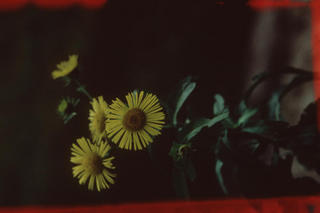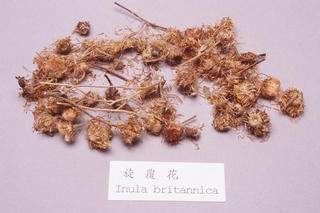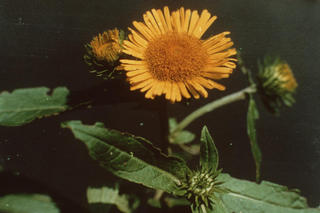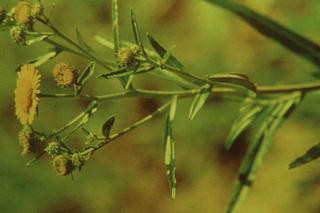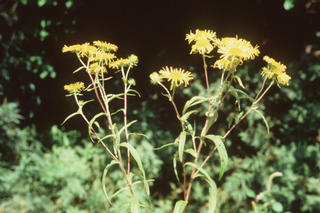Difference between revisions of "Inula japonica"
(Created page with "right right right right right == Nomenclature== === Other Names:=== == Hist...") |
(No difference)
|
Latest revision as of 14:20, 29 November 2012
Contents
- 1 Nomenclature
- 2 Historical Use of Inula japonica
- 3 Background
- 4 Nomenclature
- 5 Historical Use of Inula japonica
- 6 Background
- 7 Nomenclature
- 8 Historical Use of Inula japonica
- 9 Background
- 10 Nomenclature
- 11 Historical Use of Inula japonica
- 12 Background
- 13 Nomenclature
- 14 Historical Use of Inula japonica
- 15 Background
- 16 Nomenclature
- 17 Historical Use of Inula japonica
- 18 Background
- 19 Nomenclature
- 20 Historical Use of Inula japonica
- 21 Background
- 22 Nomenclature
- 23 Historical Use of Inula japonica
- 24 Background
- 25 Pharmaceutical Information
- 26 Evidence or the Use of Inula japonica in the Treatment of Epilepesy
- 27 Safety
Nomenclature
Other Names:
Historical Use of Inula japonica
Inula japonica in Traditional Chinese Medicine
Background
Chinese Name (pinyin): Xuanfuhua
Chinese Name :
Common Name :Inula Flower
Specific Name : Flos inulae
Scientific Name:
Collection : The drug is collected in summer and autumn at flowering, remove foreign matter and dried in the sun or in the shade.
Description : Oblate subspherical, 1 - 2cm in diameter, involucre consisting of numerous bracts, imbricated, bracts lanceolate or strip-shaped, greyish yellow, 4 - 11mm long. Sometimes pedicels remaining at the base of involucre, surfaces of the bracts and pedicels covered with white hairs. Ligulate florets 1 row, yellow about 1cm long , mostly rolled, often fallen, with 3 terminal teeth, tubular florets numerous, brownish-yellow, about 5mm long with 5 terminal teeth, numerous white pappi occurring in the apex of ovary, 5 - 6mm long. Small elliptical schene sometimes visible, texture light, easily broken and separated, odour slight, taste slightly bitter.
Identification : Surface view of various parts, non-glandular hairs of bracts 1-8 celled, base of the multicellular ones large and the apical cells especially long, the inner rows of bracts bearing 2 - 3 celled seriate non-glandular hairs. Pappus consisting of multiseriate non-glandular hairs, margin cells slightly convex. Epidermal cells of ovary containing cylindrical crystals of calcium oxalate up to 48µm long, 2 - 5µm in diameter, non-glandular hairs of ovary biseriated. 90 - 220µm long. Glandular hairs of the bracts and corolla clavate with multi-cellular head, mostly biseriate, covered with cuticle sac, stalk multicellular, biseriate, pollen grains subspherical, 22 - 23µm in diameter, exine spiny about 3µm long with three germinal pores.
Processing : Eliminate pedicels, leaves and foreign matter.Processed with honey: Stir fry (cleaned) as describe under the method for stir frying with honey (Appendix ll D) until it is no longer sticky to the fingers.
Action : To relieve cough, eliminate phlegm, promote diuresis, and arrest vomiting.
Indication : cough in common cold; cough with dyspnea and copious expectoration due to accumulation of phlegm; belching nausea and vomiting with stuffiness sensation in the epigastric region
Precautions :
Dosage : 3 to 9 g, to be wrapped in making decoction.
Storage : Preserve in a dry place, protected from moisture.
Nomenclature
Other Names:
Historical Use of Inula japonica
Inula japonica in Traditional Chinese Medicine
Background
Chinese Name (pinyin): Jinfeicao
Chinese Name :
Common Name :Inula Herb
Specific Name : Herba inulae
Scientific Name:
Collection : The drug is collected in summer and autumn and dried in the sun.
Description : Herb of Inula japonica: Lamina oblong lanceolate, 1 - 2.5cm wide, edge not curved, capitulum relatively large, 1 - 2cm in diameter, airgret about 0.5cm long.
Identification :
Processing : Eliminate foreign matter, wash briefly, cut into sections and dry.
Action : To relieve cough and dyspnea, and eliminate retained phlegm.
Indication :
Precautions :
Dosage : 4.5 to 9 g; appropriate quantity of the fresh herb to be pounded for juice for topical application.
Storage : Preserve in a dry place.
Nomenclature
Other Names:
Historical Use of Inula japonica
Inula japonica in Traditional Chinese Medicine
Background
Chinese Name (pinyin): Xuanfuhua
Chinese Name :
Common Name :Inula Flower
Specific Name : Flos inulae
Scientific Name:
Collection : The drug is collected in summer and autumn at flowering, remove foreign matter and dried in the sun or in the shade.
Description : Oblate subspherical, 1 - 2cm in diameter, involucre consisting of numerous bracts, imbricated, bracts lanceolate or strip-shaped, greyish yellow, 4 - 11mm long. Sometimes pedicels remaining at the base of involucre, surfaces of the bracts and pedicels covered with white hairs. Ligulate florets 1 row, yellow about 1cm long , mostly rolled, often fallen, with 3 terminal teeth, tubular florets numerous, brownish-yellow, about 5mm long with 5 terminal teeth, numerous white pappi occurring in the apex of ovary, 5 - 6mm long. Small elliptical schene sometimes visible, texture light, easily broken and separated, odour slight, taste slightly bitter.
Identification : Surface view of various parts, non-glandular hairs of bracts 1-8 celled, base of the multicellular ones large and the apical cells especially long, the inner rows of bracts bearing 2 - 3 celled seriate non-glandular hairs. Pappus consisting of multiseriate non-glandular hairs, margin cells slightly convex. Epidermal cells of ovary containing cylindrical crystals of calcium oxalate up to 48µm long, 2 - 5µm in diameter, non-glandular hairs of ovary biseriated. 90 - 220µm long. Glandular hairs of the bracts and corolla clavate with multi-cellular head, mostly biseriate, covered with cuticle sac, stalk multicellular, biseriate, pollen grains subspherical, 22 - 23µm in diameter, exine spiny about 3µm long with three germinal pores.
Processing : Eliminate pedicels, leaves and foreign matter.Processed with honey: Stir fry (cleaned) as describe under the method for stir frying with honey (Appendix ll D) until it is no longer sticky to the fingers.
Action : To relieve cough, eliminate phlegm, promote diuresis, and arrest vomiting.
Indication : cough in common cold; cough with dyspnea and copious expectoration due to accumulation of phlegm; belching nausea and vomiting with stuffiness sensation in the epigastric region
Precautions :
Dosage : 3 to 9 g, to be wrapped in making decoction.
Storage : Preserve in a dry place, protected from moisture.
Nomenclature
Other Names:
Historical Use of Inula japonica
Inula japonica in Traditional Chinese Medicine
Background
Chinese Name (pinyin): Jinfeicao
Chinese Name :
Common Name :Inula Herb
Specific Name : Herba inulae
Scientific Name:
Collection : The drug is collected in summer and autumn and dried in the sun.
Description : Herb of Inula japonica: Lamina oblong lanceolate, 1 - 2.5cm wide, edge not curved, capitulum relatively large, 1 - 2cm in diameter, airgret about 0.5cm long.
Identification :
Processing : Eliminate foreign matter, wash briefly, cut into sections and dry.
Action : To relieve cough and dyspnea, and eliminate retained phlegm.
Indication :
Precautions :
Dosage : 4.5 to 9 g; appropriate quantity of the fresh herb to be pounded for juice for topical application.
Storage : Preserve in a dry place.
Nomenclature
Other Names:
Historical Use of Inula japonica
Inula japonica in Traditional Chinese Medicine
Background
Chinese Name (pinyin): Xuanfuhua
Chinese Name :
Common Name :Inula Flower
Specific Name : Flos inulae
Scientific Name:
Collection : The drug is collected in summer and autumn at flowering, remove foreign matter and dried in the sun or in the shade.
Description : Oblate subspherical, 1 - 2cm in diameter, involucre consisting of numerous bracts, imbricated, bracts lanceolate or strip-shaped, greyish yellow, 4 - 11mm long. Sometimes pedicels remaining at the base of involucre, surfaces of the bracts and pedicels covered with white hairs. Ligulate florets 1 row, yellow about 1cm long , mostly rolled, often fallen, with 3 terminal teeth, tubular florets numerous, brownish-yellow, about 5mm long with 5 terminal teeth, numerous white pappi occurring in the apex of ovary, 5 - 6mm long. Small elliptical schene sometimes visible, texture light, easily broken and separated, odour slight, taste slightly bitter.
Identification : Surface view of various parts, non-glandular hairs of bracts 1-8 celled, base of the multicellular ones large and the apical cells especially long, the inner rows of bracts bearing 2 - 3 celled seriate non-glandular hairs. Pappus consisting of multiseriate non-glandular hairs, margin cells slightly convex. Epidermal cells of ovary containing cylindrical crystals of calcium oxalate up to 48µm long, 2 - 5µm in diameter, non-glandular hairs of ovary biseriated. 90 - 220µm long. Glandular hairs of the bracts and corolla clavate with multi-cellular head, mostly biseriate, covered with cuticle sac, stalk multicellular, biseriate, pollen grains subspherical, 22 - 23µm in diameter, exine spiny about 3µm long with three germinal pores.
Processing : Eliminate pedicels, leaves and foreign matter.Processed with honey: Stir fry (cleaned) as describe under the method for stir frying with honey (Appendix ll D) until it is no longer sticky to the fingers.
Action : To relieve cough, eliminate phlegm, promote diuresis, and arrest vomiting.
Indication : cough in common cold; cough with dyspnea and copious expectoration due to accumulation of phlegm; belching nausea and vomiting with stuffiness sensation in the epigastric region
Precautions :
Dosage : 3 to 9 g, to be wrapped in making decoction.
Storage : Preserve in a dry place, protected from moisture.
Nomenclature
Other Names:
Historical Use of Inula japonica
Inula japonica in Traditional Chinese Medicine
Background
Chinese Name (pinyin): Jinfeicao
Chinese Name :
Common Name :Inula Herb
Specific Name : Herba inulae
Scientific Name:
Collection : The drug is collected in summer and autumn and dried in the sun.
Description : Herb of Inula japonica: Lamina oblong lanceolate, 1 - 2.5cm wide, edge not curved, capitulum relatively large, 1 - 2cm in diameter, airgret about 0.5cm long.
Identification :
Processing : Eliminate foreign matter, wash briefly, cut into sections and dry.
Action : To relieve cough and dyspnea, and eliminate retained phlegm.
Indication :
Precautions :
Dosage : 4.5 to 9 g; appropriate quantity of the fresh herb to be pounded for juice for topical application.
Storage : Preserve in a dry place.
Nomenclature
Other Names:
Historical Use of Inula japonica
Inula japonica in Traditional Chinese Medicine
Background
Chinese Name (pinyin): Xuanfuhua
Chinese Name :
Common Name :Inula Flower
Specific Name : Flos inulae
Scientific Name:
Collection : The drug is collected in summer and autumn at flowering, remove foreign matter and dried in the sun or in the shade.
Description : Oblate subspherical, 1 - 2cm in diameter, involucre consisting of numerous bracts, imbricated, bracts lanceolate or strip-shaped, greyish yellow, 4 - 11mm long. Sometimes pedicels remaining at the base of involucre, surfaces of the bracts and pedicels covered with white hairs. Ligulate florets 1 row, yellow about 1cm long , mostly rolled, often fallen, with 3 terminal teeth, tubular florets numerous, brownish-yellow, about 5mm long with 5 terminal teeth, numerous white pappi occurring in the apex of ovary, 5 - 6mm long. Small elliptical schene sometimes visible, texture light, easily broken and separated, odour slight, taste slightly bitter.
Identification : Surface view of various parts, non-glandular hairs of bracts 1-8 celled, base of the multicellular ones large and the apical cells especially long, the inner rows of bracts bearing 2 - 3 celled seriate non-glandular hairs. Pappus consisting of multiseriate non-glandular hairs, margin cells slightly convex. Epidermal cells of ovary containing cylindrical crystals of calcium oxalate up to 48µm long, 2 - 5µm in diameter, non-glandular hairs of ovary biseriated. 90 - 220µm long. Glandular hairs of the bracts and corolla clavate with multi-cellular head, mostly biseriate, covered with cuticle sac, stalk multicellular, biseriate, pollen grains subspherical, 22 - 23µm in diameter, exine spiny about 3µm long with three germinal pores.
Processing : Eliminate pedicels, leaves and foreign matter.Processed with honey: Stir fry (cleaned) as describe under the method for stir frying with honey (Appendix ll D) until it is no longer sticky to the fingers.
Action : To relieve cough, eliminate phlegm, promote diuresis, and arrest vomiting.
Indication : cough in common cold; cough with dyspnea and copious expectoration due to accumulation of phlegm; belching nausea and vomiting with stuffiness sensation in the epigastric region
Precautions :
Dosage : 3 to 9 g, to be wrapped in making decoction.
Storage : Preserve in a dry place, protected from moisture.
Nomenclature
Other Names:
Historical Use of Inula japonica
Inula japonica in Traditional Chinese Medicine
Background
Chinese Name (pinyin): Jinfeicao
Chinese Name :
Common Name :Inula Herb
Specific Name : Herba inulae
Scientific Name:
Collection : The drug is collected in summer and autumn and dried in the sun.
Description : Herb of Inula japonica: Lamina oblong lanceolate, 1 - 2.5cm wide, edge not curved, capitulum relatively large, 1 - 2cm in diameter, airgret about 0.5cm long.
Identification :
Processing : Eliminate foreign matter, wash briefly, cut into sections and dry.
Action : To relieve cough and dyspnea, and eliminate retained phlegm.
Indication :
Precautions :
Dosage : 4.5 to 9 g; appropriate quantity of the fresh herb to be pounded for juice for topical application.
Storage : Preserve in a dry place.
Synonymns for Inula japonica
Patent Medicines and Medicines with Multiple Ingredients that include Inula japonica
Pharmaceutical Information
Chemical Constituents
Evidence or the Use of Inula japonica in the Treatment of Epilepesy
Basic Science
Animal Studies
Cohort, Case-Control and Non-Randomized Trials
Randomized Controlled Trials
Meta-Analysis
1st Five Results: pubmed search
Jin Se Kim, Jin Hee Kim, Hyeyoon Eo, In Gyoung Ju, So-Ri Son, Ji-Woon Kim, Dae Sik Jang, Myung Sook Oh
Inulae Flos has Anti-Depressive Effects by Suppressing Neuroinflammation and Recovering Dysfunction of HPA-axis.
Mol Neurobiol: 2024;
[PubMed:38457106]
[WorldCat.org]
[DOI]
(I a)
Chengyun Dou, Hongbo Zhu, Xia Xie, Cuiqin Huang, Chuangjie Cao
Integrated Pharmaco-Bioinformatics Approaches and Experimental Verification To Explore the Effect of Britanin on Nonalcoholic Fatty Liver Disease.
ACS Omega: 2024, 9(7);8274-8286
[PubMed:38405493]
[WorldCat.org]
[DOI]
(I e)
YeonGyun Jung, Nam-Hui Yim, Sang Myung Lee, Won-Kyung Cho, Min Ho Cha, Jin Yeul Ma
##Title##
Nutrients: 2024, 16(2);
[PubMed:38276557]
[WorldCat.org]
[DOI]
(I e)
Yulin Peng, Yuxin Guo, Shuyuan Zhang, Yibo Chang, Shujing Zhang, Xiaobo Wang, Wenyu Zhao, Xiaochi Ma
Identification of diverse sesquiterpenoids with anti-fibrotic potential from Inula japonica Thunb.
Bioorg Chem: 2024, 143;107084
[PubMed:38176376]
[WorldCat.org]
[DOI]
(I p)
Min Wu, Tingting Li, Lilan Chen, Sugang Peng, Wei Liao, Ruolan Bai, Xue Zhao, Hong Yang, Chunhui Wu, Hongjuan Zeng, Yiyao Liu
Corrigendum to "Essential oils from Inula japonica and Angelicae dahuricae enhance sensitivity of MCF-7/ADR breast cancer cells to doxorubicin via multiple mechanisms" [J. Ethnopharmacol. 180 (2016) 18-27].
J Ethnopharmacol: 2024, 320;117496
[PubMed:38008656]
[WorldCat.org]
[DOI]
(I p)
